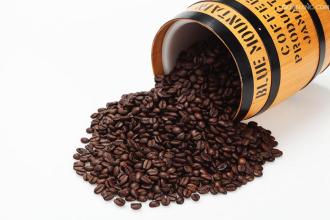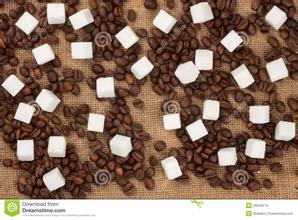How to bake Katim? -Growing environment Producing area Flavor Description
What kind of baking place Katim is suitable for-description of regional flavor in planting environment
1. The state-run Lujiang Farm in Baoshan City planted 12.6 mu in March 1991. The land is unshaded and irrigated once in the dry season. The level of management and fertilization is above. In 1993, the average yield per mu was 75 kg in 1993, 350 kg in 1994, 225 kg in 1995, 217 kg in 1996, and 36% higher than Tiebika and Bobang (160 kg per mu).
2. Yunnan Dehong Tropical Agricultural Science Research Institute 1991 planted 30 mu with no shade and anhydrous irrigation, and the level of fertilization and management was medium. The average yield per mu was 304.3 kg in 1993, 294 kg in 1994, 222.5 kg per mu in 1995, 273.6 kg per mu in 1995, and 82% higher than that of S288 (S288).
Yejia Xuefei's grading system is a little confused. According to the treatment method, the SCAA is first divided into water washing: G1, G2, sun: G1, G3, G3, G4, G5 (without G2), the smaller the number, the higher the grade. But it seems that since a few years ago, Ethiopian officials have developed another set of grades, with all exported coffee beans anonymously concentrated on the Ethiopian Commodity Exchange (ECX). High-quality beans were divided into An and B groups, and each group was subdivided into 1 and 2 grades. Group An is Yega Xuefei, which means that high-quality Yega Chuefei beans are grade A1. This anonymous approach makes it difficult for us to trace specific farms. At present, some domestic sellers are still using the old G1 and G2 classification standards, while others are using the new A1 and A2 systems.
There are four kinds of coffee trees in the world, but the coffee we drink now is mainly the fruit of two kinds of coffee trees, one is Arabica, the other is Robasta.
Coffee trees in Arabica are not easy to grow, many are on high-altitude slopes, and picking needs to be done manually. But it is better to have a balanced taste and less caffeine. And Robasta is relatively easy to grow, a variety of heat-resistant, cold-resistant, moisture-resistant, drought-resistant, disease-resistant. Once upon a time, coffee in Vietnam was planted by Robasta because of leaf rust and all the coffee trees planted in Arabica died. In addition, Rothbata is also relatively easy to harvest, in addition to manual vibration machines can also be competent. This variety has all kinds of benefits, but what is fatal is that the coffee beans produced are poor in aroma, lack of bitterness, lack of acidity, and high caffeine content, so they are mostly used to make instant coffee. Now most of the beans on the market are grown in Arabica.
Katim, as a variety that has taken root in Yunnan, I love and hate it. Although it has many shortcomings and is not suitable for planting at high altitude at all, there is still a lot of room for improvement and it has become better and better. How to find more of its advantages and make use of it is the most important. In the popular shallow baking pursuit of sour aroma to enhance the sweet taste of the domestic circle, it appears to be insufficient thickness. But few people realize that because of Katim's Romsta pedigree, it is suitable for deep and fast baking.

Important Notice :
前街咖啡 FrontStreet Coffee has moved to new addredd:
FrontStreet Coffee Address: 315,Donghua East Road,GuangZhou
Tel:020 38364473
- Prev

Flavor description of El Salvador Pacamara Coffee beans introduction of Grinding scale Variety treatment Manor
El Salvador Pacamara coffee bean flavor description grinding scale variety treatment Manor introduces Salvadoran coffee along with Mexico and Guatemala as the producer of Asa and Merdo, and is fighting for the top one or two places in China and the United States with other countries. The highlands of origin are large coffee beans of all sizes, which are fragrant and mild in taste. Like Guatemala and Costa Rica, sa
- Next

Where does Sidamo Shakiso Coffee come from? description of flavor. Introduction to the region where the varieties are produced.
Where does Sidamo Shaquiso Coffee come from? describe the flavor of the variety. Coffee is Ethiopia's most important export cash crop and the main source of Ethiopia's foreign exchange earnings. Ethiopia's coffee exports account for about 3% of the world market, making it the eighth largest coffee exporter in the world. Coffee exports increased steadily from 58000 tons in 1990 to 1995-1996.
Related
- Detailed explanation of Jadeite planting Land in Panamanian Jadeite Manor introduction to the grading system of Jadeite competitive bidding, Red bid, Green bid and Rose Summer
- Story of Coffee planting in Brenka region of Costa Rica Stonehenge Manor anaerobic heavy honey treatment of flavor mouth
- What's on the barrel of Blue Mountain Coffee beans?
- Can American coffee also pull flowers? How to use hot American style to pull out a good-looking pattern?
- Can you make a cold extract with coffee beans? What is the right proportion for cold-extracted coffee formula?
- Indonesian PWN Gold Mandrine Coffee Origin Features Flavor How to Chong? Mandolin coffee is American.
- A brief introduction to the flavor characteristics of Brazilian yellow bourbon coffee beans
- What is the effect of different water quality on the flavor of cold-extracted coffee? What kind of water is best for brewing coffee?
- Why do you think of Rose Summer whenever you mention Panamanian coffee?
- Introduction to the characteristics of authentic blue mountain coffee bean producing areas? What is the CIB Coffee Authority in Jamaica?

